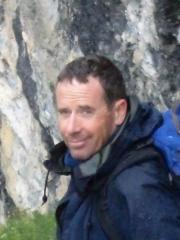
Biography
Dr David Tierney is a Senior Scientist in Science Division of the NSW Office of Environment and Heritage and associate research fellow. Current research spans impacts of fire on plant fitness, vegetation mapping, diversity and spatial patterns. He has more than 20 years’ experience as an ecologist.
David has held both research and management positions spanning the university sector, private consulting and government. This has included research in plant reproductive ecology, evolution, community structuring and also some faunal research projects. He has a broad interest in ecological processes including fire regimes, eco-hydrology, fragmentation and habitat and climate alteration.
